|
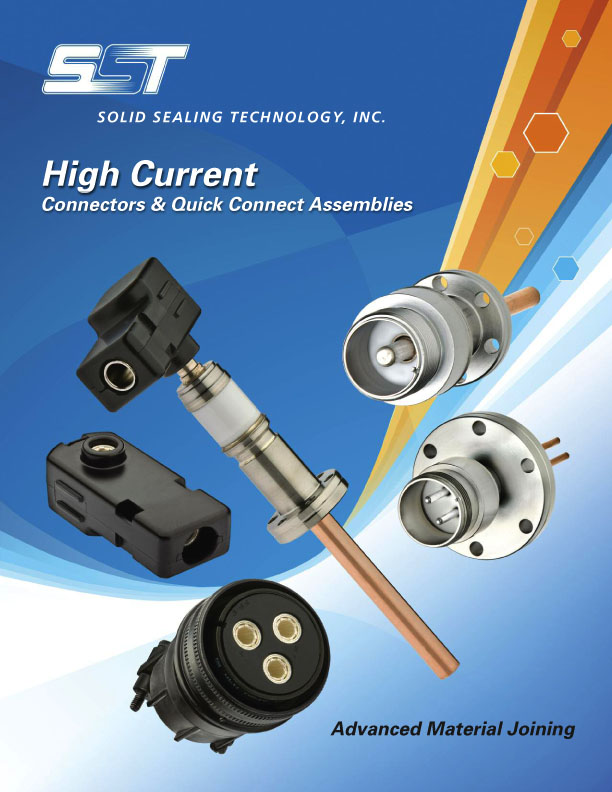
Solid Sealing Technology specializes in the design and manufacture of highly engineered hermetic products using metalizing, brazing, glass-ceramic sealing, welding, and critical assembly. SST manufactures industry standard and custom designed Vacuum Feedthroughs, Coaxial Connectors, Multi-Pin Connectors, Thermocouples, and Isolators for high temperature, UHV, and high pressure applications.
Contact:
Ph: 518-874-3600
Fax: 518-874-3610
info@solidsealing.com
| |
 PentaLineTM PentaLineTM
Rotary Vane Pumps
PentaLineTM rotary vane pumps, with an optimized drive
system, provides cost-effective, environmentally friendly vacuum, for a wide
range of applications in the low and medium vacuum range down to 10-3
mbar. Available in pumping speeds up to 35 m3/h, PentaLineTM
is hermetically sealed for leak-free vacuum, and provides compatible voltage
for worldwide use. For More Information Click HereContact:
603-578-6500
|
ULVAC
offers three compact quadrupole mass spectrometers - the low cost Qulee
BGM, Qulee CGM for high pressures and Qulee HGM for the highest
sensitivity. All feature ease-of-operation and an integrated display and
control eliminates the need for a PC. One-touch control displays the
partial pressure in Torr, mbar, or Pascal
of He, H2O, N2, O2, O2/N2
ratio and user selected gas.
Learn More
Contact
1-978-686-7550
sales@us.ulvac.com |
NEW! CB 5000 High
Frequency RF Power Supply Now at 40.68 MHz and 60MHz
Comdel's
CB 5000 high frequency power just got higher with 40.68 MHz and 60 MHz
models. The CB5000 brings the highest
power and frequency while keeping its small
package and lightweight design. It delivers 5000 Watts with forward or
delivered power mode regulation and has patented S-Technology for the ultimate process
stability. Learn more.
Comdel11 Kondelin Road
Gloucester, MA 01930
Tel: 978-282-0620 or 800-468-3144
Fax: 978-282-4980 www.comdel.com
info@comdel.com |

Reduce your development time, improve
your thin film process performance and cut your costs with Evatec's new "Optics
Toolbox" - Seamless integration of thin film design software, layer end point
strategy, optical monitoring, process recipe generation and execution with Khan
system and process controller on BAK Evaporator and MSP Sputter platforms.
Phone:
(603)
669-9656
www.evatecnet.com
E-Mail: infoNA@evatecnet.com
|
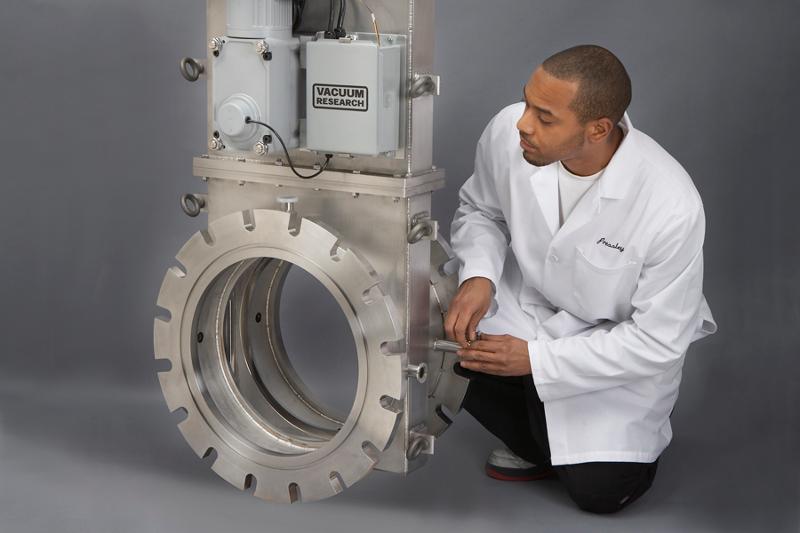
Large Throttle Valves
Throttle Valves with ports as large as 500
mm, ISO-500 or ANSI 20 inch. Also any flange style as small
as NW-25. Aluminum, steel
or stainless steel.
Phone:
800/426-9340
Web: www.vacuumresearch.com
E-Mail: vrc@vacuumresearch.com |
|
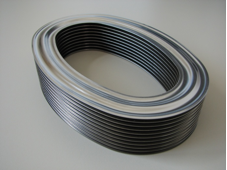
MEWASA
has expanded the manufacturing possibilities of its
bellows production, allowing the manufacture of bellows up to 1100mm in
diameter.
Combined with the modern PC-based control, our machine provides the
flexibility
to weld arbitrary bellows profiles, including oval shaped bellows with
inside
dimensions of 66.7 to 117.5mm. MEWASA
has widened its capabilities, offering greater design solutions to meet
your engineering
applications, whether it is larger dimensions or different profile
shapes.
Contact: Ira Miller,
General Manager,
Mewasa North America
i.miller@mewasa.ch
Tel: 520-797-6980
|
|
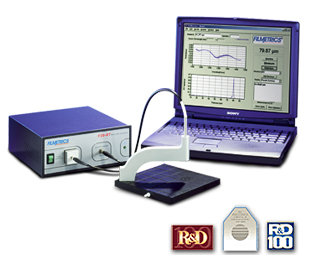
Filmetrics Thin-Film Thickness Measurement Systems
-Measure thickness from 1nm to 1mm
-Measure refractive index and other properties
-Used in thousands of applications worldwide
We offer the industry's only complete line of thin-film
measurement instruments. With our 24-hour online
"Hands On" support, expert help is only a minute away.
Contact:
www.filmetrics.com
858-573-9300 |

Dynavac's 1-meter Optical
Coating System
is a cost-effective tool for producing high-quality precision optics. Its
versatile design supports a wide range of process options including IAD, and
the split-cylinder chamber provides easy maintenance while minimizing footprint.
System interface and control is simple and supports download capability from
most thin film design packages.
www.dynavac.com
Telephone: 781-740-8600
E-Mail: sales@dynavac.com
|
|

The R.D.
Mathis Company
specializes in the fabrication of high vacuum evaporation sources for thin film
coating industries. We offer a comprehensive selection of tungsten, molybdenum
and tantalum sources through our catalog and offer custom fabrication to meet
your specific coating needs. Our "LV Series" Low Voltage, High
Current Power Supplies and "GP 100" Inert Gas Purifier compliment
your evaporation process. Contact: www.rdmathis.com 562-426-7049
|

Speed
pump-down and vacuum performance with RediVac™ Vented Screws and Vacuum Baked
O-Rings from
UC
Components Inc. www.uccomponents.com |
|
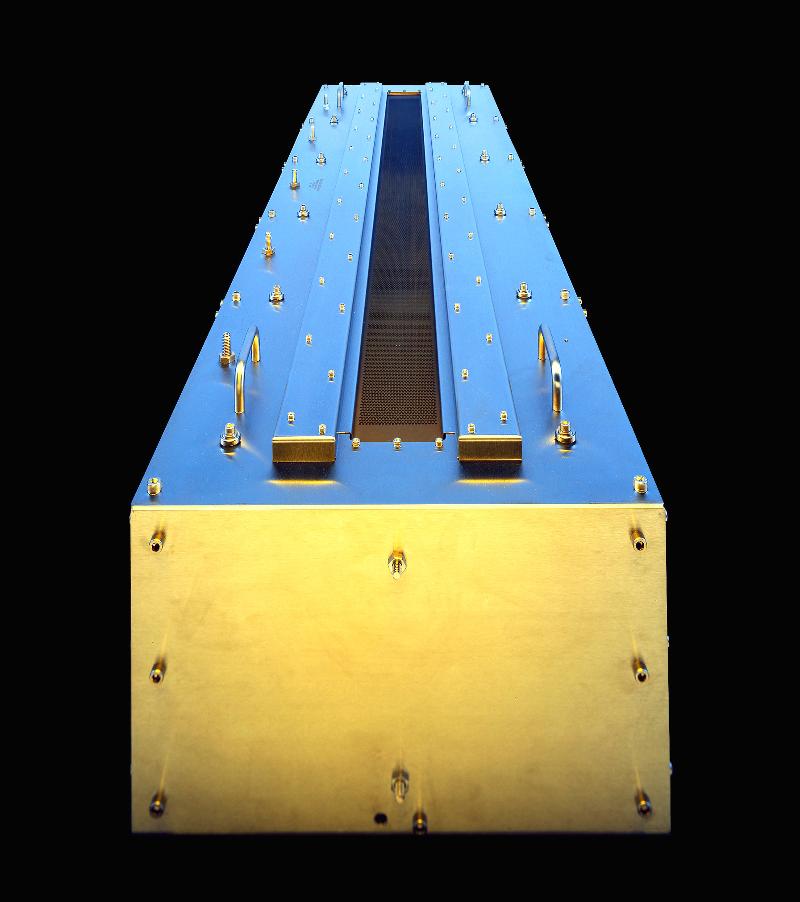
Veeco provides RF Linear Ion Sources for
uniform processing of medium and large scale substrates featuring a broad
power range and patented four-grid beam collimation technology to
meet your application needs with proven reliability and performance.
To Learn More Visit: www.veeco.com 970-221-1807
|
|
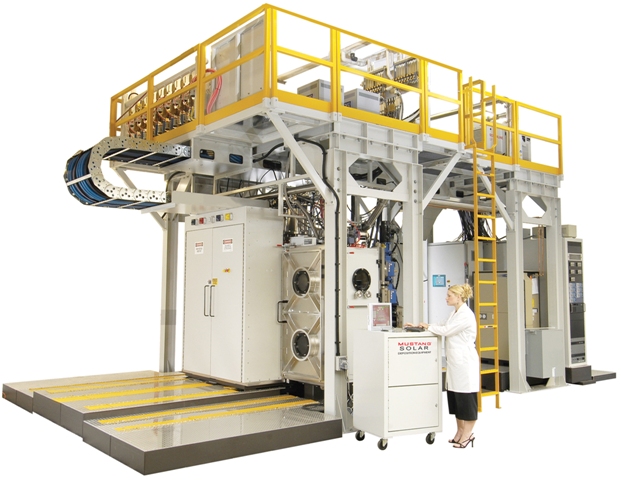
Mustang Vacuum Systems ORION
Roll to Roll Deposition Systems
Substrate: Up to 10,000 FT
length, 1000 MM wide flexible substrates configured with 1-10 deposition
sources for precision and speed. Deposition zones are individually
configurable for PVD sputter, evaporation, co evaporation and sublimation
enabling the next generation of thin film technologies.
Learn More
Contact us via E-Mail: inquiries@mustangvac.com |
|
SVC 2011 TechCon in Chicago, IL
|
|
SVC On-Location Education Program
in Beijing, China
October 18-19, 2010
Join SVC in Beijing, China October 18-19, 2010 for this English language presentation of the SVC Tutorial Course
"Vacuum Systems, Materials and Operation" Instructor: John O'Hanlon, University of Arizona Click here to learn more |
 Like us on Facebook! Like us on Facebook!
Like us today and keep track of all the up-to-the-minute SVC News.
|
|
|
|
The Society of Vacuum Coaters has been diligently preparing for the 54th Annual TechCon - being held in Chicago, IL in April 2011. This year's feature is a Symposium format, highlighting today's hottest topics, including manufacturing and technology for thin film photovoltaics and vacuum coating's place in tomorrow's technology. Along the same lines, SVConnections provides a similar service, linking today's technological news with our readership. You are welcome to forward the Society of Vacuum Coaters a link of interest for consideration in future issues of SVConnections. Just e-mail us at publications@svc.org.
|
|
ZSW
Sets New CIGS Photovoltaic World Record, 20.3% CIGS Solar Cell Efficiency
Researchers
at ZSW -Zentrum für Sonnenenergie- und Wasserstoff-Forschung Baden-Württemberg,
Germany and Centre for Solar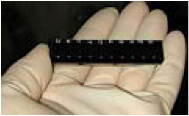 Energy and Hydrogen Research in Stuttgart, Germany
have achieved a CIGS solar cell conversion efficiency of 20.3%. The solar cell
is 0.5 square centimeters. The contact layers have a total thickness of only 4
microns, which is 50 times thinner than standard silicon cells. Energy and Hydrogen Research in Stuttgart, Germany
have achieved a CIGS solar cell conversion efficiency of 20.3%. The solar cell
is 0.5 square centimeters. The contact layers have a total thickness of only 4
microns, which is 50 times thinner than standard silicon cells.
Dr.
Michael Powalla, member of the ZSW board and head of the photovoltaics division
said "Our researchers have made the cells in a CIGS laboratory coating
plant using a modified co-evaporation process, which in principle can be scaled
up to commercial production processes. The Fraunhofer ISE in Freiburg, Germany,
has confirmed the new results. However, it would take a while before the
increased efficiency of CIGS solar cells can be commercially utilized."
ZSW has been working with industrial partner Würth Solar to develop their CIGS
thin-film solar module technology to enable industrial production. Recently
Würth Solar (Schwäbisch Hall, Germany) signed an exclusive licensing and
strategic alliance agreement with Manz Automation AG, a leading supplier of
photovoltaic production systems (Reutlingen, Germany), giving their production
technology for CIGS PV modules to Manz Automation. Contract includes Manz Automation supporting Würth Solar's
future CIGS module manufacturing expansions.
Sources:
Click on the links to read theses articles:
PV-Tech.org: http://www.pv-tech.org/news/_a/zsw_sets_another_new_cigs_997_solar_cell_record/
Semiconductor Today: http://www.semiconductor-today.com/news_items/2010/AUG/ZSW_230810.htm
Image: PV-Tech.org
|
New
Efficiency Record of 17.6% Set by EMPA for Flexible CIGS Solar Cells on Polymer
Films
Researchers
at the Swiss Federal Laboratories for Material Science and Technology (EMPA)
working closely with FLISOM Company have set a new record of 17.6% for the
efficiency of flexible thin film solar cells on polymer film. Dr. Ayodhya
N. Tiwari at the Laboratory of Thin Films and Photovoltaics led the team that
developed the process. The
efficiency has been independently verified by Fraunhofer Institute for Solar
Energy Systems (ISE) in Freiburg, Germany.
Using polymer films used as a
substrate is challenging. Polymers
have high thermal expansion coefficients, which cause large stresses in layers
deposited at high temperatures and leads to cracks and delamination of solar
cells from the substrate. Doctoral student
Adrian Chirila and other colleagues working under the supervision of Dr. Tiwari
developed a vacuum evaporation process at low temperature
(around 450ºC) which produced high quality CIGS absorber layers. These can be used with polyimide
film as a flexible substrate for roll-to-roll manufacturing.
The 17.6% cell efficiency was achieved
by reducing the optical and electronic losses in the CIGS solar cell structure.
They optimized the composition gradient of Ga across the CIGS layer thickness
and incorporated Na doping during the final stage of the growth process.
The low temperature process for CIGS
deposition enables the same process and equipment to be used for polymer as
well as metal foils. "Lower thermal budget and roll-to-roll manufacturing of high efficiency
flexible CIGS solar cells will pave the way for substantial reduction in
production costs of the next generation of solar modules produced at an
industrial scale."
Sources:
Click on the link for more information
Renewable Energy World:
http://www.renewableenergyworld.com/rea/partner/first-conferences/news/article/2010/09/efficiency-record-of-17-6-on-flexible-cigs-solar-cell-on-plastic-developed-at-empa?cmpid=rss
Image: EMPA, Switzerland
|
SoloPower is First Company
to Receive UL Certification for Flexible CIGS Modules
SoloPower (San Jose,
California) has received Underwriters 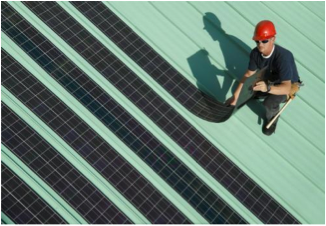 Laboratory's (UL) first certification of
a high-power flexible solar photovoltaic module. Their light-weight CIGS
modules passed rigorous UL 1703 PV module manufacturing safety testing. Laboratory's (UL) first certification of
a high-power flexible solar photovoltaic module. Their light-weight CIGS
modules passed rigorous UL 1703 PV module manufacturing safety testing.
"The certification of SoloPower's flexible
CIGS module is an important step toward the realization of lightweight,
high-power, flexible solar modules with potential to expand the roof-top solar
market and reduce balance of system costs. It is an important milestone for the
industry. I feel very gratified to see, after a 30-year career in Thin
Film CIGS PV at NREL, the technology become mature," said Dr. Rommel
Noufi, principal scientist of the NREL.
The modules range from 80Wp to 260Wp. SoloPower
claims lower installation costs and comparable reliability to traditional
silicon-based modules. They displayed their modules at the European
Photovoltaic Solar Energy Conference, September 6-9, 2010 in Valencia, Spain.
SoloPower is talking with U.S. Department of Energy in effort to obtain loan
guarantee under EPACT 2005 Section 1703 for production expansion.
SoloPower was also the first manufacturer to
receive UL certification for rigid CIGS PV modules in June 2009.
Sources:
Click on the links for more information:
SoloPower: http://www.solopower.com/ and
http://www.solopower.com/SoloPower-UL-Certification.html
Image: SoloPower
|
Record-Breaking Week for PV Industry Continues with MiaSolé's 14% Efficiency
Flex Solar Modules
 MiaSolé (Santa Clara, California) has raised the
bar on commercial CIGS module efficiency. They announced on September 2, 2010
that their large (1 meter square) area production modules have achieved 14.3%
conversion efficiency which was confirmed independently by NREL. This is the
highest independently confirmed efficiency for a commercial scale CIGS module.
"We are pleased that we continue to make progress
in the execution of our technology, cost reduction and manufacturing roadmaps,"
said Dr. Joseph Laia, CEO of MiaSolé.
The Stuttgart-based researchers at ZSW, (Zentrum
für Sonnenenergie- und Wasserstoff-Forschung Baden-Württemberg, Germany, Centre
for Solar Energy and Hydrogen Research) announced earlier that have achieved
20.3% DIGS solar cell efficiency with their 0.5 square centimeters cell. Sources:Click on the links for more information:MiaSolé:
http://www.miasole.com/Read more on: www.PV-Tech.orgImage: Miasolé MiaSolé (Santa Clara, California) has raised the
bar on commercial CIGS module efficiency. They announced on September 2, 2010
that their large (1 meter square) area production modules have achieved 14.3%
conversion efficiency which was confirmed independently by NREL. This is the
highest independently confirmed efficiency for a commercial scale CIGS module.
"We are pleased that we continue to make progress
in the execution of our technology, cost reduction and manufacturing roadmaps,"
said Dr. Joseph Laia, CEO of MiaSolé.
The Stuttgart-based researchers at ZSW, (Zentrum
für Sonnenenergie- und Wasserstoff-Forschung Baden-Württemberg, Germany, Centre
for Solar Energy and Hydrogen Research) announced earlier that have achieved
20.3% DIGS solar cell efficiency with their 0.5 square centimeters cell. Sources:Click on the links for more information:MiaSolé:
http://www.miasole.com/Read more on: www.PV-Tech.orgImage: Miasolé |
|
AQT Solar Begins Production at First CIGS Facility
Applied Quantum Technology (AQT) Solar (Santa
Clara, California) 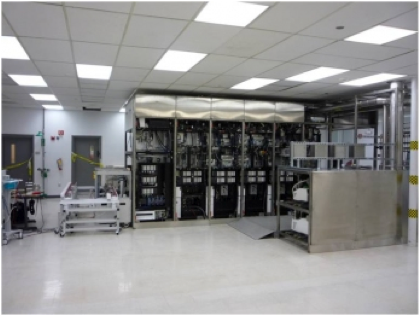 was founded in 2007. They have spent around $15 million and
have now opened their first fully operational CIGS thin-film solar cells
facility in Sunnyvale, California. Preparation, build-out, line implementation
and qualification, and production start-up was completed in less than eight
weeks. They are now producing solar cells to fill the 20 MW of customer orders,
with substantial purchase orders in the pipeline. was founded in 2007. They have spent around $15 million and
have now opened their first fully operational CIGS thin-film solar cells
facility in Sunnyvale, California. Preparation, build-out, line implementation
and qualification, and production start-up was completed in less than eight
weeks. They are now producing solar cells to fill the 20 MW of customer orders,
with substantial purchase orders in the pipeline.
AQT's new facility is a
modular 15 MW manufacturing line in a small footprint of 20,000 square feet. It
will be able to complete 400 cells per hour, Mr. Bartholomeusz said. "'AQT's
customers, the panel manufacturers, will put 60 cells in each panel, which
should have a 205-watt rating', said Kirk Hayes, an AQT equipment and site
operations engineer. 'The Intevac machine features 20 deposition chambers,
though AQT plans to use six initially', Hayes said. 'The additional chambers will
give AQT room to improve its manufacturing process and boost production rates
later', he added."
National Renewable Energy Laboratory verified that
AQT's solar cells had an efficiency of 11.2 percent. AQT reports that recent improvements have raised that
efficiency to 12 percent. When the
cells hit the commercial market later this year or in early 2011, the company
expects cell efficiencies to be at 14 percent with a finished solar module to
be at 12 percent efficiency.
Source:
Click on the link to learn more:
AQT Solar: http://www.aqtsolar.com/images/stories/aqt/pr/first_facility.pdf
Image: AQT Solar
|
Simulations Cast Light on
CIGS Solar Cell Efficiency Puzzle
Researchers
at Johannes Gutenberg-Universität Mainz, IBM and Universität Duisburg-Essen
have run computer simulations of CIGS alloys that suggest that "indium
segregation effects may play an important role in reducing the conversion
efficiencies of photovoltaic/solar cell devices."
"The
starting point for the study was the observation that, despite an optimal
bandgap for solar radiation absorption suggesting that a CIGS material with 70%
Ga should yield the highest efficiency, in fact 30% Ga is experimentally found
to be best. The estimate is based
on the badgaps of the non-alloyed materials in CuInSe2 (1.0eV) and CuGaSe2 (1.7eV)."
The studies "suggest that fast cooling of
high-temperature processed material could minimize bandgap fluctuations,
leading to better solar cell performance. The authors comment: The lack of
phase separation in actual solar cells shows that the In-Ga distribution is
'frozen' in a high-temperature state. Thus, higher production temperatures and
a reasonably fast cooling will lead to better efficiencies, which have recently
been shown experimentally."
"In practice, such fast cooling has been limited by
the heat resistance of the glass used as a substrate for CIGS solar cells.
"To enable faster cooling of CIGS
solar cells, Schott AG has developed a special glass with which the process
temperature can be increased to well above 600°C. The cells that result are
considerably more homogeneous, opening the way to cells with greater efficiency
levels."
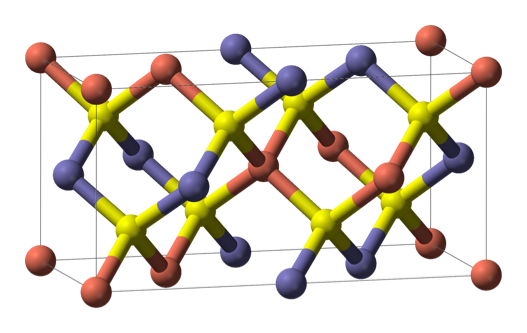
CIGS unit cells showing positions of atoms : Red:Cu, Yellow:Se,
Blue:In/Ga
Source:
Click on the link to learn more:
Semiconductor Today: http://www.semiconductor-today.com/news_items/2010/JULY/MAINZ_220710.html
Image: Wikimedia Commons
|
|
Top 4 Clean-Tech
Predictions for 2H 2010
How companies are adjusting to the
realities of the new energy landscape, according to Michael Butler, Chairman
and CEO of Cascadia Capital, August 18, 2010 are adjusting to the
realities of the new energy landscape, according to Michael Butler, Chairman
and CEO of Cascadia Capital, August 18, 2010
Michael Butler, Chairman and CEO of
Cascadia Capita, predicts that clean energy (solar and wind) will be the
significant story of 2010. Clean energy M&A (mergers and acquisitions)
volume in Q1 2010 was at an all time high of $17.6 billion. He sees the
following four trends shaping the future of clean energy.
1) Continued acceleration of cross-border M&A , international
companies buying U.S. companies.
2) Continued
emphasis on capital efficient business models. The current second generation of
CIGS business models are not relying on large capital investments. Companies
have a goal of achieving manufacturing scale at lowest cost without billion
dollar factories.
3) Vertical
integration of wind and solar supply chain. Expect to see more examples such as
Siemens AG acquisition of Isreal-based parabolic trough power receiver
manufacturer, Solel Solar Systems. Such integrations mitigate risk and may also reduce manufacturing cost,
making funds available for other projects.
4) Continued
movement away from early stage opportunities. Investors want reduced risk by
investing in 'late stage' clean energy companies with proven technology, strong
customer acceptance resourceful management teams and capital-efficient business
models. Clean tech venture capital investments in Q2 2010 totaled $1.5 billion,
which is highest amount since Q3 2008. Also, investors are putting larger
amounts in fewer deals as shown by the 64% increase in 2010 invested dollars
over Q2 2009.
Sources:
Click on the links to learn more:
Renewable Energy World: http://www.renewableenergyworld.com/rea/news/article/2010/08/top-4-clean-tech-predictions-for-2h-2010
Also
Cascadia Capital: http://www.cascadiacapital.com/index.html
Image: Cascadia Capital
|
New Solar Energy Conversion Process Discovered by Stanford Engineers Could
Revamp Solar Power Production
BY LOUIS BERGERON, Stanford Report, August 2, 2010
"A new process that simultaneously
combines the light and heat of solar radiation to generate electricity could
offer more than double the efficiency of existing solar cell technology, say
the Stanford engineers who discovered it and proved that it works. 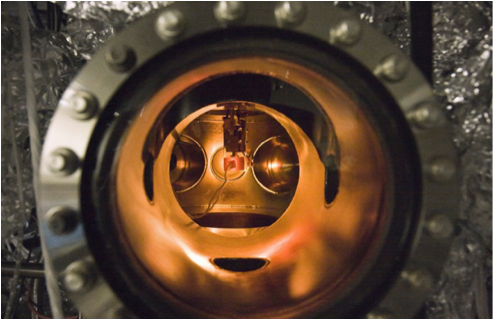
The process,
called 'photon enhanced thermionic emission,' or PETE, could reduce
the costs of solar energy production enough for it to compete with oil as an
energy source.
Stanford engineers have figured out how
to simultaneously use the light and heat of the sun to generate electricity in
a way that could make solar power production more than twice as efficient as
existing methods and potentially cheap enough to compete with oil.
Unlike photovoltaic technology
currently used in solar panels - which becomes less efficient as the
temperature rises - the new process excels at higher temperatures."
Source: Click on the link to read the entire article:
Stanford University:
http://news.stanford.edu/news/2010/august/new-solar-method-080210.html
Image: Courtesy of Nick Melosh, Stanford University
|
Final Instruments on NASA Climate/Weather Satellite Integrated
GREENBELT,
Md. - "The last of five instruments slated to fly on the upcoming NPOESS
Preparatory Project (NPP) climate and weather satellite have been successfully
integrated, according to NASA officials. The polar-orbiting satellite is
scheduled to launch in late 2011.
 NASA's NPP weather satellite shown in a Ball Aerospace
clean room where the instruments have be integrated and the spacecraft is now
preparing for environmental testing prior to its October 2011 launch. Credit:
Ball Aerospace The NPP satellite was an pre-cursor mission to the
National Polar-orbiting Operational Environmental Satellite System (NPOESS)
that has recently been restructured. The last instrument, Cross-track Infrared
Sounder (CrIS), is an advanced atmospheric sensor, built by ITT Corporation,
Fort Wayne, Ind. Ball Aerospace & Technologies Corp., Boulder, Colo., built
the NPP spacecraft and is performing the integration and checkout of the NPP
satellite. NASA's NPP weather satellite shown in a Ball Aerospace
clean room where the instruments have be integrated and the spacecraft is now
preparing for environmental testing prior to its October 2011 launch. Credit:
Ball Aerospace The NPP satellite was an pre-cursor mission to the
National Polar-orbiting Operational Environmental Satellite System (NPOESS)
that has recently been restructured. The last instrument, Cross-track Infrared
Sounder (CrIS), is an advanced atmospheric sensor, built by ITT Corporation,
Fort Wayne, Ind. Ball Aerospace & Technologies Corp., Boulder, Colo., built
the NPP spacecraft and is performing the integration and checkout of the NPP
satellite.
The CrIS mechanical, electrical and performance testing was successfully
completed and the NPP Satellite team is now working to finish the satellite
Pre-Environmental Test baseline performance phase. The Environmental Test flow,
which includes Dynamics, Electromagnetic Compatibility, and Thermal testing, is
scheduled to begin this October.
The five-instrument suite will collect and distribute remotely sensed land,
ocean, and atmospheric data to the meteorological and global climate change
communities. It will provide atmospheric and sea surface temperatures, humidity
sounding, land and ocean biological productivity, cloud and aerosol properties
and total/profile ozone measurements."
Source:
Click on the link to read the full article:
NASA.gov:
http://www.nasa.gov/centers/goddard/news/releases/2010/10-063.html
Image: Courtesty of NASA
|
Purple Light Means Go, Ultraviolet Light Means Stop
August 2 ,2010
"A new membrane developed at the
University of Rochester's  Laboratory for Laser Energetics blocks gas from
flowing through it when one color of light is shined on its surface, and
permits gas to flow through when another color of light is used. It is the
first time that scientists have developed a membrane that can be controlled in
this way by light. Laboratory for Laser Energetics blocks gas from
flowing through it when one color of light is shined on its surface, and
permits gas to flow through when another color of light is used. It is the
first time that scientists have developed a membrane that can be controlled in
this way by light.
Eric Glowacki, a graduate student at
the University's Laboratory for Laser Energetics, and Kenneth Marshall, his
advisor, invented the membrane. Marshall will present their findings at the
annual conference of the International Society for Optics and Photonics (SPIE)
in San Diego on Aug. 1.
The membrane is a piece of hard plastic
riddled with tiny holes that are filled with liquid crystals and a dye. When
purple light illuminates the surface of the membrane, the dye molecules
straighten out and the liquid crystals fall into line, which allows gas to
easily flow through the holes. But when ultraviolet light illuminates the
surface, the dye molecules bend into a banana shape and the liquid crystals
scatter into random orientations, clogging the tunnel and blocking gas from
penetrating."
Source:
Click on the link to read the full article:
University of Rochester:
http://www.rochester.edu/news/show.php?id=3662
Image: Courtesy of the University of Rochester
|
|
 Interested in sharing the latest news in vacuum coating technology? Forward us a link to an article you want to share with the rest of the SVC readership to publications@svc.org. Purchase advertising space on this newsletter by contacting SVC at svcinfo@svc.org. Interested in sharing the latest news in vacuum coating technology? Forward us a link to an article you want to share with the rest of the SVC readership to publications@svc.org. Purchase advertising space on this newsletter by contacting SVC at svcinfo@svc.org. |
Society of Vacuum Coaters 71 Pinon Hill Place, NE
Albuquerque, NM 87122
(505) 856-7188 Fax (505) 856-6716
www.svc.org E-mail: svcinfo@svc.org
|
|
|